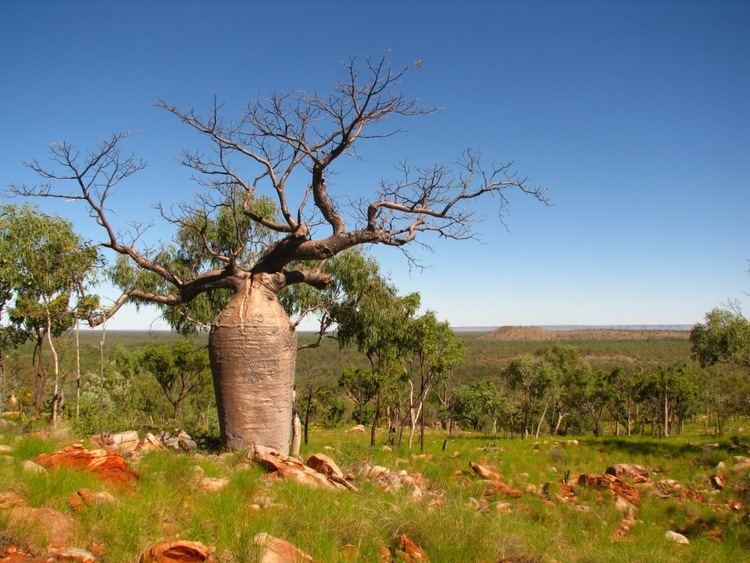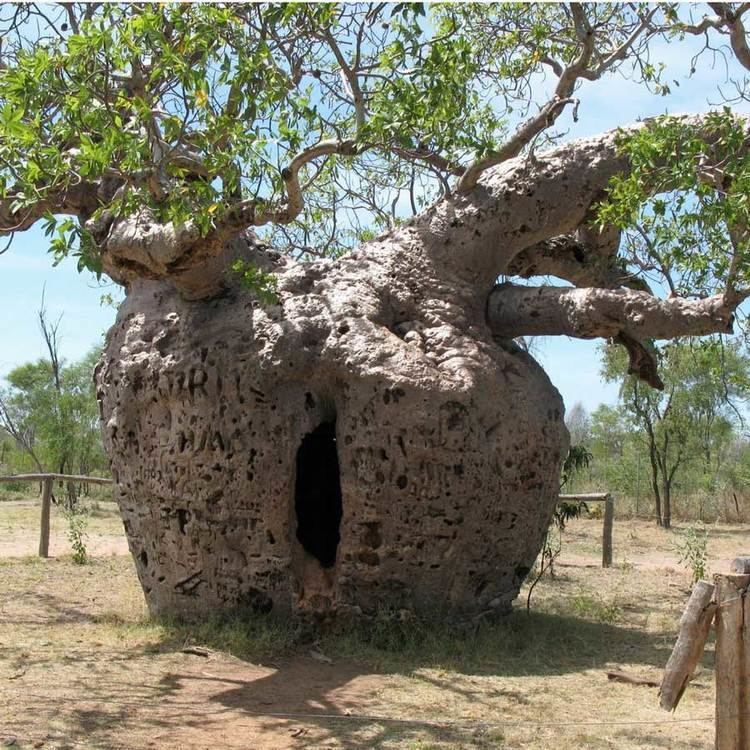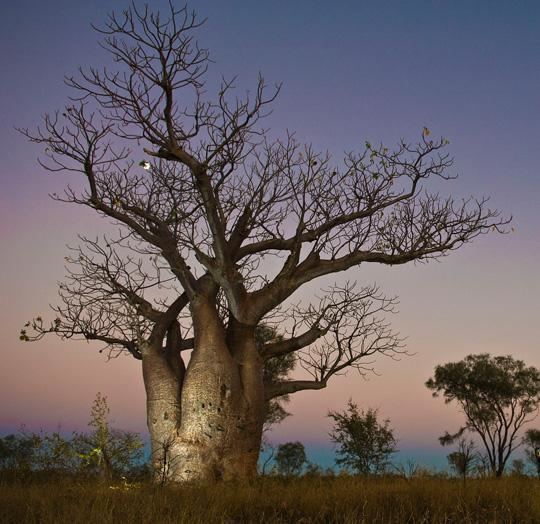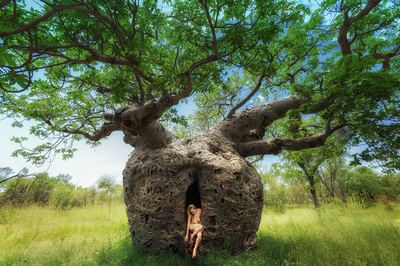Rank Species | Genus Adansonia Higher classification Baobab | |
 | ||
Similar Baobab, Adansonia grandidieri, Adansonia digitata, Adansonia rubrostipa, Adansonia madagascariensis | ||
4000 year old boab tree adansonia gregorii with bee hive
Adansonia gregorii, commonly known as the boab, is a tree in the family Malvaceae. As with other baobabs, it is easily recognised by the swollen base of its trunk, which forms a massive caudex, giving the tree a bottle-like appearance. Endemic to Australia, boab occurs in the Kimberley region of Western Australia, and east into the Northern Territory. It is the only baobab to occur in Australia, the others being native to Madagascar (six species) and mainland Africa and the Arabian Peninsula (two species). Boab ranges from 5 to 15 meters in height, usually between 9 and 12 metres, with a broad bottle-shaped trunk. Its trunk base may be extremely large; trunks with a diameter of over five metres have been recorded. A. gregorii is deciduous, losing its leaves during the dry winter period and producing new leaves and large white flowers between December and May.
Contents
- 4000 year old boab tree adansonia gregorii with bee hive
- Alternative names
- Uses
- Notable trees
- References

Alternative names

The common name "boab" is a shortened form of the generic common name "baobab". Although boab is the most widely recognised common name, Adansonia gregorii has a number of other common names, including:

The specific name "gregorii" honours the Australian explorer Augustus Gregory.
Uses
The plant has a wide variety of uses; most parts are edible and it is the source of a number of materials. Its medicinal products and the ability to store water through dry seasons has been exploited. Indigenous Australians obtained water from hollows in the tree, and used the white powder that fills the seed pods as a food. Decorative paintings or carvings were sometimes made on the outer surface of the fruit. The leaves were used medicinally. The leaves may see a future use prepared as food, due to their high iron content.
Notable trees

A large hollow boab south of Derby, Western Australia is reputed to have been used in the 1890s as a lockup for Aboriginal prisoners on their way to Derby for sentencing. The Boab Prison Tree, Derby is now a tourist attraction. Another hollow boab near Wyndham, Western Australia was also used as a prison tree. The Hillgrove Lockup or Wyndham Prison Tree is on the King River Road out of Wyndham near the Moochalabra Dam. Gija Jumulu is a large boab which was transported from Warmun in the Kimberley region of Western Australia to Kings Park in 2008. Further to this, there is a boab tree located within the Wyndham, Western Australia caravan park that is of estimated age 2000 years, standing 20 metres tall and with a trunk 5 metres wide.

